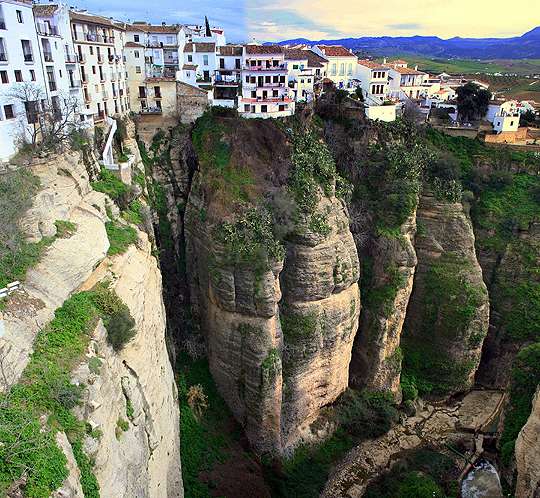Want to learn more about Ronda, Spain? Read on for facts and info on this historical city of Spain situated in the province of Malega…
Ronda is the name of a Spanish city located in the province of Malaga. The exact location of the city places it at a distance of about 100 km from the main city of Malaga. Currently it is home to more than 35,000 people.
Historians believe that the early Celts were the first people to settle in this historic town. However upon exploring the architectural sites in the city one can see obvious influences of Roman and Moorish culture. It was in 1485 that Catholic Spain took full control over the city as it embarked on the mission of Reconquista.
The overall topography of the city of Ronda is very mountainous. Its elevated height places the city more than 750 m above sea level. The city also has the Guadalevin running through it in a manner that it divides the city into two halves. One of the divisions created by the river is the El Tajo Canyon which is a 100 meter plus deep valley. Ronda also has a rich cultivation of the Spanish Fir tree.
Three bridges have been built in the city. The first to be built was the Puente Romano which translates as the Roman Bridge. The other two bridges are known as the Puente Viejo meaning Old Bridge and the Puente Nuevo meaning new bridge. Although this last bridge is known as the New Bridge It was actually constructed in 1751. It is however the tallest of the three bridges and towers more than 390 feet above the floor of the Canyon.
The city is also home to a number of impressive historical sites that attract people from all over the world. One of the most important sites of the city is the Plaza de toros de Ronda. This particular site is acknowledged as being the oldest bull fighting ring in the whole of Spain. It is still used periodically to host bullfighting events. The ring was constructed back in 1784 and is built according to the neoclassical style of architecture.
Also among the historical sights of the city are the Banos Arabes which were the Arab baths. However these are only partially intact and date back to the 13th century. Ronda is also acknowledged as being the birthplace of a prominent Sufi scholar by the name of Salih Ben Sharif al Rundi. The famous poet Ibn Abbad al Rundi was also born in this Spanish city.
Another site located right next to the Puente Nuevo served as the former town hall. It is regarded as being the site of a parador. It offers an impressive view of the deep canyon known as Tajo.
This historical region is also noted for its fine variety of culinary delights, which form a common part of the culture of the region. Today it is regarded as being one of the must-see regions of Spain especially because of the historical relics that remain standing there.





